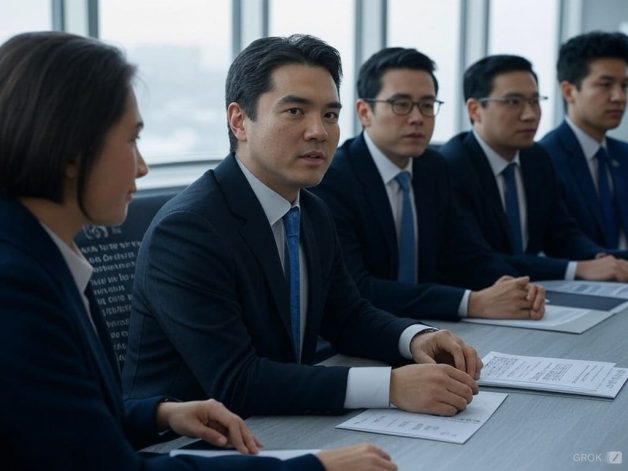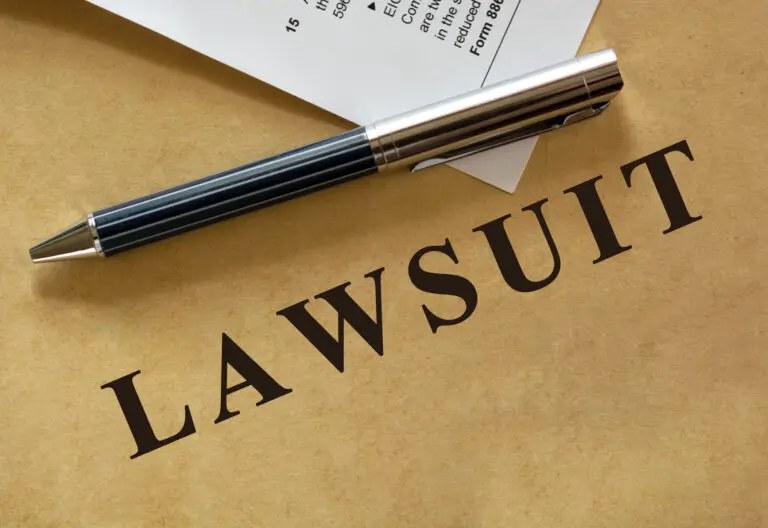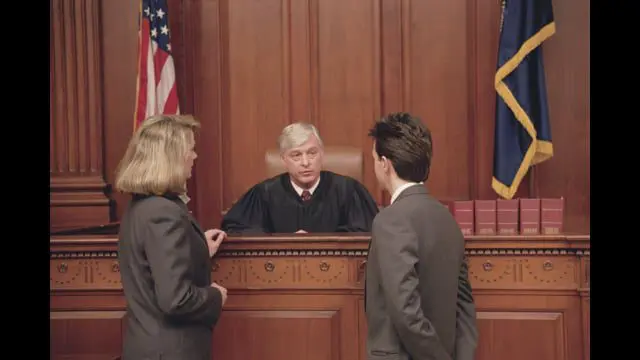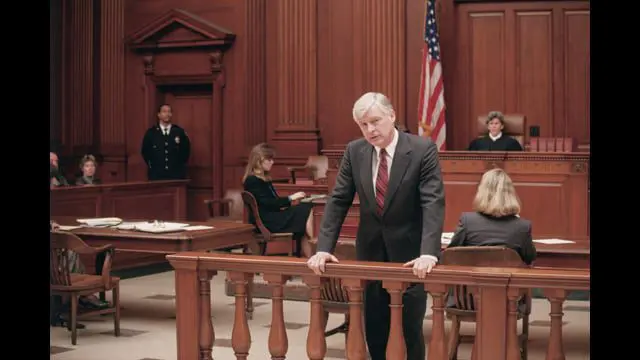En el ámbito del Derecho penal, el concepto de vicarious liability stands as a complex and often controversial doctrine. This principle, which holds one party responsible for the actions of another, challenges traditional notions of individual culpability and raises important questions about the nature of criminal responsibility. At its core, vicarious liability in criminal law refers to situations where a defendant can be held accountable for crimes committed by someone else, typically due to a special relationship between the parties involved.
The application of vicarious liability in criminal cases diverges significantly from its more common use in civil law. While civil vicarious liability is widely accepted and frequently applied in areas such as employer-employee relationships, its criminal counterpart is generally viewed with skepticism by legal scholars and practitioners alike. This reluctance stems from the fundamental principle that criminal punishment should be based on personal guilt and individual wrongdoing.
Despite this general aversion, there are specific contexts within criminal law where vicarious liability plays a significant role. One of the most prominent examples is corporate criminal liability, where a corporation can be held responsible for the criminal acts of its employees or agents. This form of vicarious liability has become increasingly important in an era of complex corporate structures and widespread white-collar crime.
Another area where vicarious liability features prominently is in conspiracy law. Under the Pinkerton doctrine, named after the landmark U.S. Supreme Court case Pinkerton v. United States, a conspirator can be held liable for crimes committed by co-conspirators in furtherance of the conspiracy, even if the defendant did not directly participate in or have knowledge of those specific acts. This doctrine has been particularly controversial, with some courts imposing constitutional limitations on its application.
En felony murder rule represents yet another manifestation of vicarious liability in criminal law. This rule allows for a defendant to be charged with murder if a death occurs during the commission of certain felonies, even if the defendant did not directly cause the death or intend for it to occur. The felony murder rule has been criticized for its potential to impose severe punishments on defendants who may have had limited involvement in the underlying felony.
As we delve deeper into the intricacies of vicarious liability in criminal law, it becomes clear that this doctrine raises fundamental questions about the nature of criminal responsibility, the limits of individual culpability, and the balance between societal protection and fairness to defendants. These issues have significant implications for how we conceptualize and apply criminal law in modern society.
The Foundations of Vicarious Liability in Criminal Law
The concept of vicarious liability in criminal law has its roots in the common law tradition, evolving over centuries of legal precedent and statutory development. At its most basic level, vicarious liability challenges the traditional requirement of mens rea, or guilty mind, in criminal law. This principle typically demands that a defendant possess a culpable mental state to be held criminally responsible for their actions.
Vicarious liability, however, introduces a form of responsabilidad objetiva into criminal law, where a defendant can be held responsible for another’s actions regardless of their personal fault or intent. This departure from the standard mens rea requirement is justified on various grounds, including the need for effective law enforcement, the protection of public welfare, and the recognition of certain special relationships that create a duty of care or control.
The legal basis for vicarious liability in criminal law often stems from the doctrine of responsat superior, which translates to “let the master answer.” This principle, borrowed from civil law, holds that an employer or principal can be held responsible for the actions of their employees or agents when those actions occur within the scope of employment or agency.
In the criminal context, the application of respondeat superior has been more limited and controversial. Courts have grappled with the tension between the need to hold organizations accountable for criminal conduct and the fundamental principle that criminal liability should be based on personal guilt. This tension has led to the development of various tests and limitations on the application of vicarious liability in criminal cases.
One important distinction in the application of vicarious liability is between primary liability y secondary liability. Primary liability refers to situations where a defendant is held directly responsible for their own actions or omissions. Secondary liability, on the other hand, involves holding a defendant responsible for the actions of another person. Vicarious liability falls under the category of secondary liability, as it imputes the criminal acts of one party to another.
The justification for imposing vicarious liability in criminal law often rests on policy considerations. Proponents argue that it serves as a deterrent, encouraging those in positions of authority or control to take steps to prevent criminal conduct by those under their supervision. Critics, however, contend that it violates fundamental principles of criminal justice, such as the presumption of innocence and the requirement of personal guilt.
Corporate Criminal Liability: A Prime Example of Vicarious Liability
One of the most significant and widely recognized applications of vicarious liability in criminal law is in the realm of corporate criminal liability. This concept allows for corporations, as legal entities, to be held criminally responsible for the actions of their employees, officers, or agents. The rationale behind corporate criminal liability is rooted in the recognition that corporations, while not natural persons, wield significant power and influence in society and should be subject to criminal sanctions for wrongdoing.
The development of corporate criminal liability in the United States can be traced back to the landmark Supreme Court case of New York Central & Hudson River Railroad Co. v. United States in 1909. In this case, the Court established that corporations could be held criminally liable for the acts of their agents, effectively extending the principle of respondeat superior from civil law to the criminal context.
Under the doctrine of corporate criminal liability, a corporation can be held responsible for crimes committed by its employees or agents if the following conditions are generally met:
- The employee or agent was acting within the scope of their employment or authority.
- The criminal act was committed, at least in part, for the benefit of the corporation.
- The act can be imputed to the corporation through the actions of its high managerial agents or through corporate policy.
This form of vicarious liability has significant implications for how corporations operate and manage risk. It creates a strong incentive for companies to implement robust compliance programs, internal controls, and ethical guidelines to prevent criminal conduct by their employees. Failure to do so can result in severe consequences, including substantial fines, reputational damage, and in some cases, the effective dissolution of the corporation.
Critics of corporate criminal liability argue that it unfairly punishes shareholders and innocent employees for the actions of a few bad actors within the organization. They contend that civil penalties and individual prosecutions are more appropriate means of addressing corporate wrongdoing. Proponents, however, maintain that corporate criminal liability is necessary to deter systemic misconduct and ensure that corporations take responsibility for the actions taken on their behalf.
The scope of corporate criminal liability has expanded over time to encompass a wide range of offenses, including fraude, environmental crimes, antitrust violationsy blanqueo de dinero. In recent years, there has been an increased focus on holding corporations accountable for crimes committed in the international arena, such as foreign bribery and violations of economic sanctions.
One of the challenges in prosecuting corporations is determining the appropriate punishment. Unlike individuals, corporations cannot be imprisoned. As a result, the primary forms of punishment for corporate crimes are monetary fines, restitución, corporate probation, and in extreme cases, forfeiture of assets or debarment from government contracts. In some jurisdictions, courts have also imposed structural reforms on corporations as part of their sentences, requiring changes to corporate governance or the appointment of independent monitors.
The doctrine of corporate criminal liability has also led to the development of deferred prosecution agreements (DPAs) and non-prosecution agreements (NPAs) as alternative means of resolving corporate criminal investigations. These agreements allow corporations to avoid formal prosecution in exchange for admitting wrongdoing, paying fines, and implementing reforms. While these agreements have become increasingly common, they have also faced criticism for potentially allowing corporations to escape full accountability for their actions.
Conspiracy Law and the Pinkerton Doctrine
Another significant area where vicarious liability plays a crucial role in criminal law is in the context of conspiración. Conspiracy, defined as an agreement between two or more persons to commit a criminal act, is itself a crime in most jurisdictions. However, the concept of vicarious liability in conspiracy law extends beyond mere participation in the agreement to encompass liability for substantive crimes committed by co-conspirators.
En Pinkerton doctrine, named after the 1946 U.S. Supreme Court case Pinkerton v. United States, establishes a form of vicarious liability for members of a conspiracy. Under this doctrine, a conspirator can be held criminally responsible for reasonably foreseeable crimes committed by co-conspirators in furtherance of the conspiracy, even if the defendant did not directly participate in or have knowledge of those specific acts.
The Pinkerton doctrine rests on the theory that conspirators are “partners in crime” and should be mutually accountable for each other’s actions within the scope of their agreement. The key elements for imposing Pinkerton liability typically include:
- The existence of a conspiracy
- The commission of a substantive crime by a co-conspirator
- The crime was committed in furtherance of the conspiracy
- The crime was reasonably foreseeable as a natural consequence of the conspiracy
The application of the Pinkerton doctrine has been controversial, with critics arguing that it extends criminal liability too far and potentially violates due process. Some courts have imposed constitutional limitations on the doctrine, particularly in cases where a defendant’s involvement in the conspiracy was minimal or where the resulting crimes were not reasonably foreseeable.
Despite these criticisms, the Pinkerton doctrine remains an important tool for prosecutors, particularly in cases involving complex criminal enterprises or organized crime. It allows for the prosecution of individuals who may not have directly committed specific crimes but who contributed to the overall criminal enterprise.
The scope of Pinkerton liability can be quite broad. For example, in a drug trafficking conspiracy, a low-level member who only agreed to transport drugs could potentially be held liable for violent crimes committed by other members of the organization, if those crimes were reasonably foreseeable and in furtherance of the drug trafficking operation.
Courts have grappled with the limits of Pinkerton liability, particularly in cases involving attenuated connections between the defendant and the substantive crimes. Some jurisdictions have adopted a “reasonably foreseeable” standard, while others have imposed stricter limitations, requiring a closer nexus between the defendant’s involvement in the conspiracy and the resulting crimes.
The Pinkerton doctrine intersects with other areas of criminal law, including the felony murder rule. In some jurisdictions, a defendant can be held liable for a murder committed by a co-conspirator during the course of a felony, even if the defendant was not present at the scene and did not intend for the killing to occur.
The Felony Murder Rule: Vicarious Liability for Unintended Deaths
En felony murder rule represents one of the most controversial applications of vicarious liability in criminal law. This doctrine allows for a defendant to be charged with murder if a death occurs during the commission of certain felonies, even if the defendant did not directly cause the death or intend for it to occur. The felony murder rule effectively imputes the mens rea (guilty mind) required for murder based on the defendant’s participation in the underlying felony.
The rationale behind the felony murder rule is rooted in the idea that certain felonies are inherently dangerous and that those who engage in such activities should be held accountable for any deaths that result, regardless of their specific intent. The rule is often justified as a deterrent, aimed at discouraging individuals from participating in dangerous felonies by holding them responsible for all potential consequences.
The application of the felony murder rule varies significantly across jurisdictions. In some states, it applies to a wide range of felonies, while others limit its application to specific “inherently dangerous” felonies such as robo, robo, violación, incendio provocadoy kidnapping. The scope of liability under the felony murder rule can be quite broad, potentially encompassing:
- Deaths caused directly by the defendant
- Deaths caused by co-felons
- Deaths of innocent bystanders or victims
- In some jurisdictions, even the death of a co-felon killed by law enforcement or the intended victim
Critics of the felony murder rule argue that it violates fundamental principles of criminal justice by imposing severe punishments (often life imprisonment or even the death penalty) on defendants who may not have intended or foreseen the resulting death. They contend that it disproportionately affects young offenders and those with limited roles in the underlying felony.
Proponents of the rule, however, maintain that it serves important public policy goals by deterring participation in dangerous felonies and ensuring that those who engage in such activities are held fully accountable for the consequences of their actions.
The felony murder rule intersects with other forms of vicarious liability, particularly in the context of conspiracy law. Under the Pinkerton doctrine, a conspirator can potentially be held liable for a felony murder committed by a co-conspirator, even if they were not present at the scene and did not directly participate in the underlying felony.
Some jurisdictions have imposed limitations on the felony murder rule to address concerns about its potential for unfair application. These limitations may include:
- Requiring that the death be a foreseeable consequence of the underlying felony
- Limiting liability to those who were major participants in the underlying felony
- Excluding liability for deaths caused by law enforcement or the intended victim
- Allowing for affirmative defenses, such as withdrawal from the felony before the death occurred
The felony murder rule has faced constitutional challenges, particularly on due process and Eighth Amendment grounds. While some state courts have struck down or limited the rule, the U.S. Supreme Court has generally upheld its constitutionality, leaving its application largely to the discretion of individual states.
Constitutional Limitations on Vicarious Criminal Liability
As the concept of vicarious liability in criminal law has evolved, courts have grappled with the constitutional implications of holding individuals responsible for the actions of others. The tension between the need for effective law enforcement and the protection of individual rights has led to the development of various constitutional limitations on the application of vicarious liability in criminal cases.
One of the primary constitutional concerns surrounding vicarious criminal liability is the potential violation of due process. The Fifth and Fourteenth Amendments to the U.S. Constitution guarantee that no person shall be deprived of life, liberty, or property without due process of law. This principle is fundamental to the American criminal justice system and serves as a check on the government’s power to impose criminal sanctions.
Courts have recognized that vicarious liability, particularly when applied broadly, can potentially infringe on due process rights by punishing individuals for acts they did not personally commit or intend. As a result, some courts have imposed constitutional limitations on doctrines such as the Pinkerton rule and the felony murder rule.
In the context of conspiracy law, some courts have held that due process requires a closer nexus between the defendant’s involvement in the conspiracy and the resulting crimes for which they are held vicariously liable. This has led to the development of a “reasonably foreseeable” standard, which limits Pinkerton liability to crimes that were a foreseeable consequence of the conspiracy and within its scope.
The Eighth Amendment’s prohibition on cruel and unusual punishment has also been invoked to challenge certain applications of vicarious liability, particularly in cases involving severe sentences such as life imprisonment or the death penalty. While the U.S. Supreme Court has generally upheld the constitutionality of the felony murder rule, some state courts have imposed limitations or abolished the rule altogether based on state constitutional provisions.
Another constitutional concern relates to the presumption of innocence and the requirement that the prosecution prove each element of a crime beyond a reasonable doubt. Vicarious liability, particularly in its strictest forms, can be seen as conflicting with these principles by effectively shifting the burden of proof or eliminating the need to prove certain elements of an offense.
To address these constitutional concerns, courts have developed various tests and limitations on the application of vicarious liability in criminal cases. These may include:
- Requiring a showing of personal culpability or negligence on the part of the defendant
- Limiting vicarious liability to specific types of offenses or relationships
- Allowing for affirmative defenses, such as lack of knowledge or reasonable efforts to prevent the criminal conduct
- Imposing proportionality requirements to ensure that the punishment fits the defendant’s level of culpability
In the corporate context, courts have grappled with the constitutional implications of holding organizations criminally liable for the acts of their employees or agents. While the Supreme Court has generally upheld the constitutionality of corporate criminal liability, some lower courts have imposed limitations, such as requiring that the criminal conduct be authorized or recklessly tolerated by high-level corporate officials.
The intersection of vicarious liability and constitutional rights remains an evolving area of law, with courts continuing to refine and limit the doctrine to ensure its compatibility with fundamental principles of justice and individual rights.
Comparative Perspectives on Vicarious Criminal Liability
The concept of vicarious liability in criminal law is not unique to the United States, and a comparative analysis reveals significant variations in how different legal systems approach this doctrine. Understanding these diverse perspectives can provide valuable insights into the strengths and weaknesses of various approaches to vicarious criminal liability.
In the United Kingdom, the approach to vicarious liability in criminal law is generally more restrictive than in the United States. English law traditionally adheres more strictly to the principle that criminal liability should be based on personal fault. However, there are exceptions, particularly in the realm of regulatory offenses and certain statutory crimes. The UK has also developed a concept of “identification theory” for corporate criminal liability, which focuses on the actions of a company’s “directing mind and will” rather than adopting the broader respondeat superior approach used in the United States.
En derecho civil jurisdictions, such as France and Germany, the approach to vicarious criminal liability tends to be more restrictive. These legal systems generally place a greater emphasis on individual culpability and are more reluctant to impose criminal liability on corporations or individuals for the acts of others. However, there are exceptions, particularly in the realm of regulatory offenses and environmental crimes.
El concepto de corporate criminal liability varies significantly across jurisdictions. While the United States has embraced a broad theory of corporate criminal liability based on respondeat superior, many other countries have adopted more limited approaches. For example:
- In Germany, corporate criminal liability does not exist as such. Instead, administrative sanctions can be imposed on corporations for the wrongdoing of their employees.
- France has adopted a form of corporate criminal liability, but it is more limited than in the U.S., requiring that the offense be committed by a corporate organ or representative acting on behalf of the company.
- Italy has introduced a form of quasi-criminal liability for corporations, which combines elements of criminal and administrative law.
These variations reflect different legal traditions, policy considerations, and cultural attitudes towards corporate responsibility and individual culpability.
The application of vicarious liability in conspiracy law also varies across jurisdictions. While the Pinkerton doctrine is widely applied in the United States, many other countries have more restrictive approaches to conspiracy liability. For example, in England and Wales, the doctrine of joint enterprise, which allowed for vicarious liability in group crimes, was significantly narrowed by a 2016 Supreme Court decision.
En felony murder rule, which represents one of the most extreme forms of vicarious liability in criminal law, is primarily a feature of U.S. law. Most other common law jurisdictions have either abolished or significantly limited this doctrine. For instance:
- England and Wales abolished the felony murder rule in 1957.
- Canada has significantly restricted its application, requiring that the defendant have subjective foresight of the likelihood of death.
- Australia has largely abandoned the felony murder rule, with most states adopting more restrictive approaches to homicide liability.
These comparative perspectives highlight the ongoing debate about the appropriate scope of vicarious liability in criminal law. While some jurisdictions have embraced broader theories of vicarious liability as a means of addressing complex criminal enterprises and corporate wrongdoing, others have prioritized principles of individual culpability and due process.
Challenges and Future Directions in Vicarious Criminal Liability
As the legal landscape continues to evolve, the doctrine of vicarious liability in criminal law faces several challenges and potential areas for reform. These issues reflect broader debates about the nature of criminal responsibility, the role of corporations in society, and the balance between effective law enforcement and individual rights.
One significant challenge is the tension between vicarious liability and the principle of personal culpability. Critics argue that holding individuals or corporations criminally responsible for the acts of others undermines fundamental notions of justice and fairness. This concern is particularly acute in cases involving severe penalties, such as long prison sentences or substantial fines for corporations.
The rise of ciberdelincuencia and other forms of technology-facilitated offenses presents new challenges for the application of vicarious liability. As criminal enterprises become more complex and operate across international borders, traditional notions of conspiracy and corporate liability may need to be reevaluated. Questions arise about how to attribute responsibility in decentralized networks or in cases involving artificial intelligence and autonomous systems.
In the corporate context, there is ongoing debate about the effectiveness of criminal sanctions against organizations. Some argue that civil penalties and regulatory enforcement may be more appropriate and effective in addressing corporate misconduct. Others advocate for reforms to corporate criminal liability that would focus more on the culpability of high-level executives and decision-makers rather than imposing blanket liability on the entire organization.
The globalization of business and the increasing prevalence of multinational corporations raise complex questions about the application of vicarious liability across different legal systems. As corporations operate in multiple jurisdictions with varying approaches to corporate criminal liability, there is a need for greater international cooperation and harmonization of legal standards.
Another area of potential reform is the development of more nuanced approaches to vicarious liability that take into account the specific circumstances of each case. This could involve:
- Expanding the use of compliance defense for corporations that have implemented robust compliance programs and taken reasonable steps to prevent criminal conduct.
- Developing more sophisticated models for assessing corporate culpability, such as the “corporate ethos” theory, which focuses on the overall culture and policies of an organization rather than the acts of individual employees.
- Refining the application of conspiracy liability to ensure that it targets those with meaningful involvement in criminal enterprises while avoiding overreach.
- Exploring alternative models of corporate accountability, such as deferred prosecution agreements y corporate probation, that focus on reform and prevention rather than purely punitive measures.
The intersection of vicarious liability with emerging areas of law, such as environmental crimes y data protection offenses, may require new legal frameworks and approaches. As society grapples with complex global challenges like climate change and digital privacy, the role of vicarious liability in addressing these issues will likely evolve.
Finally, there is an ongoing need for empirical research on the deterrent effects and practical consequences of vicarious liability in criminal law. Such research could inform policy decisions and help strike an appropriate balance between organizational accountability and individual rights.
As the legal system continues to grapple with these challenges, the doctrine of vicarious liability in criminal law will likely undergo further refinement and adaptation. The goal will be to develop approaches that effectively address complex forms of criminality while upholding fundamental principles of justice and due process.
In conclusion, vicarious liability in criminal law remains a complex and evolving doctrine with significant implications for individuals, corporations, and society as a whole. While it serves important law enforcement objectives, its application must be carefully balanced against principles of individual culpability and fairness. As legal systems around the world continue to refine their approaches to vicarious criminal liability, they will need to adapt to new challenges posed by technological advancements, globalization, and changing societal expectations of corporate responsibility. The ongoing debate and development of this area of law reflect the broader struggle to ensure justice and accountability in an increasingly complex world.
Citations:
- https://www.law.cornell.edu/wex/vicarious_liability
- https://pressbooks.pub/alaskacriminallaw2022/chapter/vicarious-liability/
- https://www.bindmans.com/news-insights/blogs/vicarious-liability-triumphs-in-the-supreme-court/
- https://open.lib.umn.edu/criminallaw/chapter/7-2-vicarious-liability/
- https://www.vintti.com/blog/vicarious-liability-legal-concept-explained
- https://digitalcommons.wcl.american.edu/cgi/viewcontent.cgi?article=1031&context=aulr
- https://www.zahavianlegalmarketing.com/criminal-defense-attorney-keywords/









